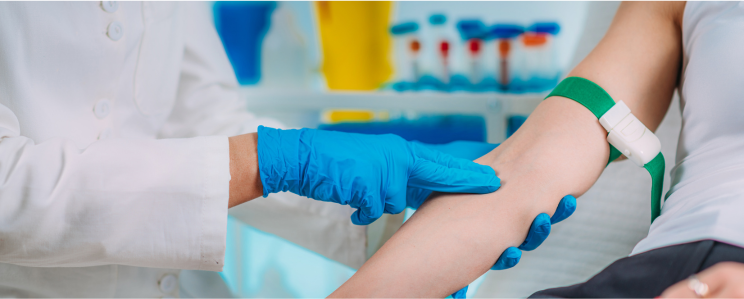4 Simple Techniques For Northeast Medical Institute - New Haven Campus Phlebotomy Course & Cna Class
Wiki Article
Our Northeast Medical Institute - New Haven Campus Phlebotomy Course & Cna Class Statements
Table of ContentsFascination About Northeast Medical Institute - New Haven Campus Phlebotomy Course & Cna ClassNortheast Medical Institute - New Haven Campus Phlebotomy Course & Cna Class Fundamentals ExplainedMore About Northeast Medical Institute - New Haven Campus Phlebotomy Course & Cna ClassThe 6-Minute Rule for Northeast Medical Institute - New Haven Campus Phlebotomy Course & Cna ClassNortheast Medical Institute - New Haven Campus Phlebotomy Course & Cna Class - An OverviewAbout Northeast Medical Institute - New Haven Campus Phlebotomy Course & Cna Class
Nonetheless, using such devices should be accompanied by various other infection prevention and control techniques, and training in their use. Not all safety and security gadgets apply to phlebotomy. Prior to picking a safety-engineered gadget, customers must completely check out offered tools to determine their appropriate usage, compatibility with existing phlebotomy practices, and efficiency in securing team and individuals (12, 33).For settings with reduced sources, cost is a driving variable in purchase of safety-engineered tools. Where safety-engineered gadgets are not readily available, skilled usage of a needle and syringe is acceptable.
In the blood-sampling space for an outpatient division or center, offer a comfy reclining sofa with an arm rest.
6 Easy Facts About Northeast Medical Institute - New Haven Campus Phlebotomy Course & Cna Class Shown
Guarantee that the signs for blood sampling are clearly defined, either in a written method or in documented directions (e.g. in a lab kind). At all times, follow the methods for infection avoidance and control detailed in Table 2.2. Infection avoidance and control techniques. Collect all the tools needed for the procedure and place it within secure and simple reach on a tray or trolley, ensuring that all the products are clearly noticeable.Present yourself to the client, and ask the person to specify their complete name. Check that the laboratory kind matches the individual's identity (i.e. match the patient's details with the research laboratory type, to guarantee exact identification).
Make the patient comfortable in a supine setting (ideally). Location a clean paper or towel under the client's arm. Talk about the examination to be done (see Annex F) and get verbal authorization. The person has a right to reject a test at any kind of time prior to the blood tasting, so it is necessary to make sure that the client has actually comprehended the procedure.
The Ultimate Guide To Northeast Medical Institute - New Haven Campus Phlebotomy Course & Cna Class
Extend the individual's arm and evaluate the antecubital fossa or lower arm. Locate a capillary of a good size that is visible, straight and clear.DO NOT insert the needle where veins are diverting, due to the fact that this raises the possibility of a haematoma. The vein ought to be noticeable without using the tourniquet. Finding the vein will certainly aid in establishing the right review size of needle. Apply the tourniquet regarding 45 finger sizes over the venepuncture site and re-examine the capillary.
Haemolysis, contamination and existence of intravenous fluid and medication can all modify the results (39. Nursing personnel and doctors may access main venous lines for samplings complying with protocols. Samplings from main lines bring a risk of contamination or incorrect lab test outcomes. It serves, yet not suitable, to injure specimens when first presenting an in-dwelling venous tool, before connecting the cannula to the intravenous fluids.
Some Ideas on Northeast Medical Institute - New Haven Campus Phlebotomy Course & Cna Class You Need To Know
Failing to allow sufficient contact time increases the risk of contamination. DO NOT touch the cleaned up site; in specific, DO NOT place a finger over the blood vessel to guide the shaft of the exposed needle.Ask the patient to form a clenched fist so the capillaries are a lot more famous. Get in the vein promptly at a 30 level angle or less, and proceed to present the needle along the blood vessel at the easiest angle of access - CNA Classes. When adequate blood has actually been accumulated, release the tourniquet prior to withdrawing the needle
3 Easy Facts About Northeast Medical Institute - New Haven Campus Phlebotomy Course & Cna Class Explained
Take out the needle carefully and use mild stress to the site with a clean gauze or dry cotton-wool ball. Ask the person to hold the gauze or cotton woollen in position, with the arm expanded and increased. Ask the individual NOT to bend the arm, since doing so creates a haematoma.
The Ultimate Guide To Northeast Medical Institute - New Haven Campus Phlebotomy Course & Cna Class
Do not push the syringe bettor since added pressure enhances the threat of haemolysis. Where feasible, maintain the tubes in a shelf and relocate the shelf towards you. Infuse downwards right into the suitable coloured stopper. DO NOT eliminate the stopper due to the fact that it will certainly launch the vacuum cleaner. If the example tube does not have a rubber stopper, infuse exceptionally gradually into the tube as decreasing the pressure and speed made use of to move the specimen lowers the danger of haemolysis.
Report this wiki page